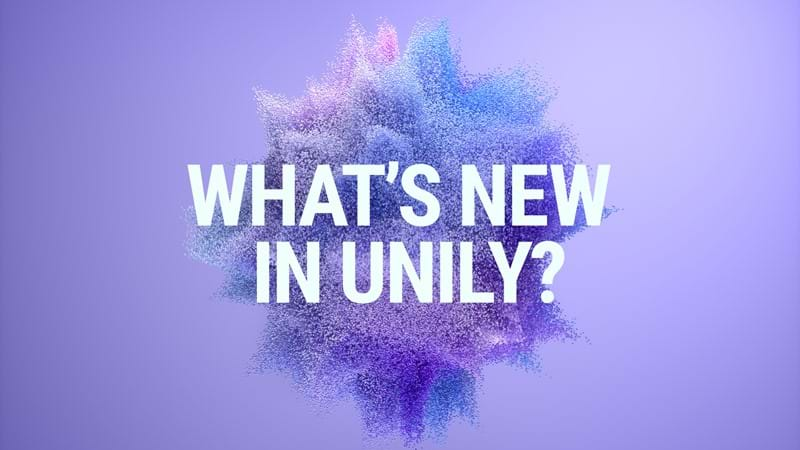Reboot culture with a value-aligned employee recognition strategy
The playbook for cultivating a compelling culture is being rewritten. As workforces disperse and employees seek new opportunities to connect with both their colleagues and their organization’s mission, the case for a value-driven employee recognition strategy is being made.

Turning to employee recognition to transform workplace culture
COVID-19 hasn’t just impacted the way we work, it’s also changed how we feel about our corporate environment. More than 50% of employees now struggle to feel connected to their colleagues and organizational culture as a result of the pandemic.
All signs point to the need for change, but what can be done to transform your enterprise’s culture remotely? An employee recognition scheme presents two crucial benefits in one: you can reward top performers while reinforcing the behaviors and culture that your organization values.
However, employee recognition in the remote work era comes with its own set of challenges. How can you give your employees a pat on the back virtually? And what kind of approach will genuinely feel rewarding? These are the questions decisionmakers must consider as they refine their approach to building a compelling culture, and fortunately, our own recognition expert is here to provide some of the answers.
Meet Clayton Steel, our reward and recognition expert
Everyone has a side hustle. For our own Clayton Steel, his curiosity on how companies “keep employees happy” led him to launch his passion project 3 years ago, an organization called ‘Out of Office.’ “OOO helps companies retain top talent and better understand their existing culture,” he explains.
By hosting unique events, onsite games, and bringing employees and colleagues together for the sake of meaningful interactions, Clay has been helping corporate managers humanize their staff. “Employees shouldn’t feel like a number, but rather an integral member of that family,” Clay states. “When employees feel like the former—they leave.”
5 ways to upgrade your employee recognition strategy
As our go-to source for all things employee recognition, Clay shares some of the top questions he sees on the subject as well as his advice for leaders looking to launch their own schemes:
#1. Why is employee recognition particularly important now?
I think the definition of “employee recognition” has recently changed for good. Prior to March 2020, employee recognition wasn't digital, but largely in person and at the office. It could be as simple as a pat on the back, a high-five, or a verbal “hey, well done.” The same way we cheer for the sound of the office gong after a big sale...there’s no feeling like that available anymore. At least in the physical sense.
Now that our only co-workers are our family and pets, the convenience of ‘running into’ an employee at work and highlighting their achievements is gone. Acknowledging the efforts of our co-workers has moved away from an in-person, real-time, celebration. To acknowledge someone can now be more of an inconvenience, while all-the-more proving to be increasingly important.
The current state of work and our ability to recognize our peers are at odds.
Post March 2020, companies that wish to adopt an employee recognition strategy are now forced to do so entirely digitally. Celebrating employees for their hard work has become more important and must now be intentional and proactive. Managers and fellow co-workers must go out of their way to congratulate colleagues as well as have the digital workplace tools to be able to do so.

#2. What are the benefits of an employee recognition scheme?
In the same way you hear kids on the playground, before attempting an injury prone stunt, shout, "Hey Mom! Watch this!” -- employee recognition acts as a reinforcement of the actions we take at work. If nobody is there to witness our outcomes, they can feel less valuable. We want people to know that we are hard-working and invaluable members of a team. Cognitively we haven’t changed from the kid on the playground, but yet, we’ve matured in the ways we seek and receive attention for doing something positive.
Employee recognition schemes tell your employees that you care. It shows them that you are paying attention to their efforts, which in turn, reaffirms the perceived value of their work. As human beings, we constantly seek attention (or approval) and much of what we do is dependent on who will notice. If you show your employees that you indeed are “watching” them succeed, they will be more inclined to deliver higher quality work and feel positively about their efforts which ultimately will boost employee experience.
"Attention is one of the most valuable resources in existence for social animals."
In his research concerning human connection, MacDonald asserts that “receiving attention was literally a matter of life and death. The people who didn’t feel good around others, or didn’t feel bad when they were separated from others, wouldn’t have the motivation to do the things that are required to pass their genes down the generations.”
#3. Why should organizations align their recognition efforts with their missions and values?
Corporate values are the sails on the ship leading the company to revenue. Unchanging, they are the organizational centerpiece that assures the members of the crew why they’re on that boat in the first place. As corporate decisions should continuously reflect company values, employees are more inclined to work for companies that align with what they stand for as an individual. By recognizing employees for embodying corporate values, you are reminding them of their personal connection to the overall goal of the company and reassuring them of their works’ meaning.
#4. What are your top tips for leaders looking to enhance employee recognition?
Gamify it. Give employees the chance to quantify their efforts with a points-based system. This helps accomplish two engagement-boosting side effects: 1) It creates healthy competition among teams, and gives accomplished employees something to hang their hats on – and 2) Competition commands attention. Employees are aware of who’s being recognized. Having a scoreboard is a representation of the importance a company puts on cheering on their employees. With an intranet-based scoreboard, communications teams are creating a ‘digital culture’ as an extension of their offices.
Have top-down recognition quotas. Have your CEO give praise to a particular individual in a “Weekly Employee Spotlight” on the front page of the intranet. Enforce a recognition minimum from C-Levels and VP’s to remind employees of their impact to the business as a whole. If your Junior Executive has a major accomplishment, surprise them with an shout out from the CXO. Show the people on the front lines of the business that they matter. Employee recognition from C-Levels and VP’s have an unparalleled increase on moral on the individual and their peers alike.

Create a culture laced with positivity by recognizing often and making it public both internally and externally. Even introverted employees prefer their hard work be recognized by many, over just one person. When managers publicly recognize members of their team, they look good for hiring and growing a talented team, and their employee is reminded of their job-security and importance in that role. If employees are recognized externally, prospective new-hires are exposed to how supportive your managers are.
#5. Any other advice for those just getting started?
- You can’t reward everyone. Ensure any recognition is for truly specific and impactful actions to avoid watering-down the value of the shout-out. I.e.--don’t give public praise for menial effort.
- Don’t reward retroactively - keep it current.
- Enable recognition on mobile devices - it’s where your employees are 24/7. Getting a mobile notification that you’ve been awarded kudos is a brilliant feeling. Giving kudos needs to be as convenient as possible for it to work effectively.

Are you ready to launch a recognition scheme that will transform your culture?
The right employee recognition scheme will cultivate an inspired culture that encourages every employee to come together to produce top tier work. If you’re looking to enhance your reward scheme and build momentum with a next-generation intranet, get in touch with our digital workplace experts.
Get started. Get your free demo.
Reinvent your intranet for the employee experience era.















